Global markets are going through a tough period — including the cryptocurrency market. But judging by talk from the peanut gallery, it seems like some observers haven’t received the memo.
“Feel like we’re relatively safe through mid-terms,” Twitter’s “CryptoKaleo” — also known simply as “Kaleo” — wrote in a Sept. 12 tweet to his 535,000 followers, referring to the United State’s November mid-term elections. The prediction was accompanied by a chart indicating his belief that Bitcoin’s (BTC) price would surge to $34,000 — a 50% gain from its roughly $20,000 level as of last week — before the end of the year.
“Of course we can bleed lower,” fellow pseudonymous Twitter mega-influencer Pentoshi wrote in a Sept. 9 missive to his 611,000 followers. “But the market at this value is far more attractive than it’s been in over a year. […] I grabbed a little $BTC yesterday / no alts but will be nibbling.”
Those assessments come from the “respectable” observers — those who have periodically been correct in the past. One gentleman in my inbox today — a Charlie Shrem looking to sell his “investing calendar” — assured readers that a “major crypto ‘run-up’ could begin tomorrow.” Look further and it isn’t hard to find even more bullish prognostications, like the prediction that Bitcoin is on the cusp of a 400% surge that will bring it to an all-time high price of $80,000 and market capitalization of $1.5 trillion — $500 billion more than the value of all the silver on Earth.
It’s good to see the optimism running rampant, even if it is mostly among influencers looking for engagement and paying customers. Unfortunately, macroeconomic headwinds indicate the reality is a little darker — perhaps a lot darker.

FedEx last week underscored the possibility that economic conditions might worsen with its announcement that it had fallen $500 million short of its first-quarter revenue target. “These numbers — they don’t portend very well,” CEO Raj Subramaniam wryly noted in an interview with CNBC. His comments, which included a prediction that the numbers represented the beginning of a global recession, prompted a 21% end-of-week crash in his company’s stock price that took the wider market along for the ride.
Related: What will drive crypto’s likely 2024 bull run?
In response to the economic doldrums, FedEx said it was planning to take measures including the closure of 90 locations by the end of the year. The good news: Americans are so saddled with debt that it’s unlikely they were planning to visit any of those locations anyway. Consumer debt hit $16.15 trillion during the second quarter of 2022 — a new record — the Federal Reserve Bank of New York noted in an August report. The number amounts to a little more than $48,000 for every man, woman and child in the United States — 330 million in all.

With a national median income of $31,000, that equates to an average debt-to-income ratio of 154%. If you want to factor in a little more than $30 trillion in debt held by the federal government, you can add another $93,000 per person — for a total of $141,000 and a debt-to-income ratio of 454%. (The numbers obviously become worse if you account for the fact that just 133 million Americans enjoyed full-time employment as of August.)
While policymakers might be lackadaisical about government debt, they are more concerned about consumer debt. “I’m telling the American people that we’re going to get control of inflation,” President Joe Biden said in a CBS interview on Sunday, prompting observers to wonder whether he was attempting to preempt this week’s Federal Reserve announcement of a potentially enormous, 100 basis point rate hike in the federal interest rate. Such a move would likely send markets into a tailspin from which they would not recover for some time.
Ironically, even that move might not be enough to tame inflation in the near term. Considering the rapid rise in debt, perhaps it’s no surprise that inflation — up a little more than 8% in August year-over-year — has shown few signs of abating. Americans may not have much money left, but — by and large — that reality hasn’t tamped down demand. If the New York Fed’s report was any indicator, the cash backing that demand is coming from credit. The bank noted that credit card debt in the second quarter experienced the largest year-over-year percentage increase in more than 20 years.
Related: What will cryptocurrency market look like in 2027? Here are 5 predictions
Therein lies the rub. No matter how quickly the feds move to disincentivize debt, it isn’t clear when asset prices will rise. High debt levels — which already exist — mean less money for buying things. Increasing the cost of debt service, as the Federal Reserve is attempting to do, means less money for buying things. Forcing Americans into a state of economic ruination in order to bring costs down means less money for buying things. Failing to control inflation and allowing the cost of basic goods and services to continue rising — exacerbated, of course, by an energy crisis in Europe over which financial managers have little control — means less money for buying anything else.
Maybe this outlook is the same as the one Elon Musk arrived at when he said in June that he had a “super bad feeling” about the economy. Other observers have issued even darker takes, including the famously debt-averse Rich Dad, Poor Dad author Robert Kiyosaki. “Biggest Bubble Bust coming,” Kiyosaki wrote on Twitter in April. “Baby Boomer’s retirements to be stolen. $10 trillion in fake money spending ending. Government, Wall Street & Fed are thieves. Hyper-inflation Depression here. Buy gold, silver, Bitcoin before the coyote wakes up.”
Admittedly, Kiyosaki’s assessment is partially at odds with the outcomes that pessimists might expect. Economic calamity should result in declining asset prices across the board — including prices for gold, silver and Bitcoin. A more optimistic forecaster might hope that Americans will learn from their mistakes, take the next year to pay their debts, and resume spending big in 2024 — while avoiding a hyper-inflationary depression.
In either scenario, one thing seems relatively certain: Neither crypto nor any other asset class is on the brink of a record-breaking surge. If you want to prosper through investing in the year ahead, you’d better start learning how to buy short options from less market-savvy optimists.
Rudy Takala is the opinion editor at Cointelegraph. He formerly worked as an editor or reporter in newsrooms that include Fox News, The Hill and the Washington Examiner. He holds a master’s degree in political communication from American University in Washington, DC.
This article is for general information purposes and is not intended to be and should not be taken as legal or investment advice. The views, thoughts, and opinions expressed here are the author’s alone and do not necessarily reflect or represent the views and opinions of Cointelegraph.
 [flexi-common-toolbar] [flexi-form class=”flexi_form_style” title=”Submit to Flexi” name=”my_form” ajax=”true”][flexi-form-tag type=”post_title” class=”fl-input” title=”Title” value=”” required=”true”][flexi-form-tag type=”category” title=”Select category”][flexi-form-tag type=”tag” title=”Insert tag”][flexi-form-tag type=”article” class=”fl-textarea” title=”Description” ][flexi-form-tag type=”file” title=”Select file” required=”true”][flexi-form-tag type=”submit” name=”submit” value=”Submit Now”] [/flexi-form]
[flexi-common-toolbar] [flexi-form class=”flexi_form_style” title=”Submit to Flexi” name=”my_form” ajax=”true”][flexi-form-tag type=”post_title” class=”fl-input” title=”Title” value=”” required=”true”][flexi-form-tag type=”category” title=”Select category”][flexi-form-tag type=”tag” title=”Insert tag”][flexi-form-tag type=”article” class=”fl-textarea” title=”Description” ][flexi-form-tag type=”file” title=”Select file” required=”true”][flexi-form-tag type=”submit” name=”submit” value=”Submit Now”] [/flexi-form]

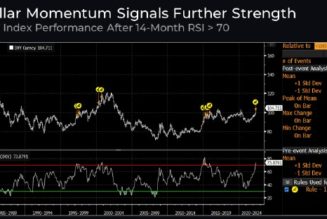
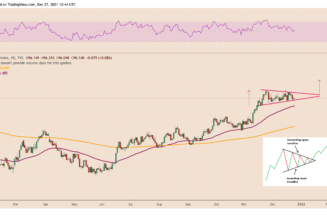


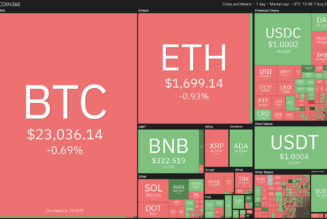

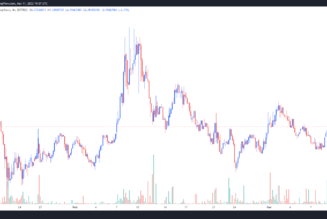
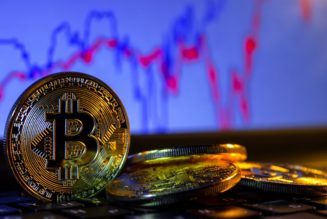

Tagged: Bitcoin, crypto, crypto blog, Crypto news, cryptocurrency, investing, Markets